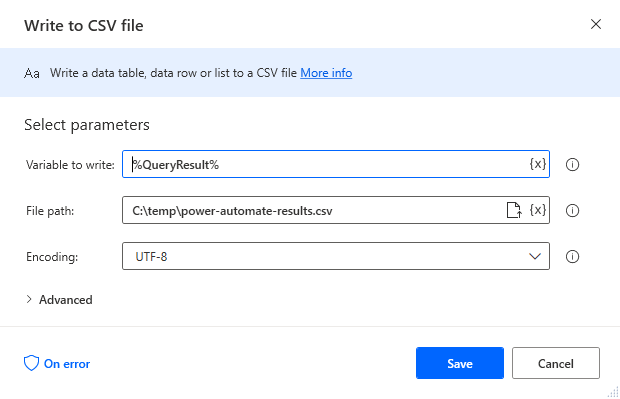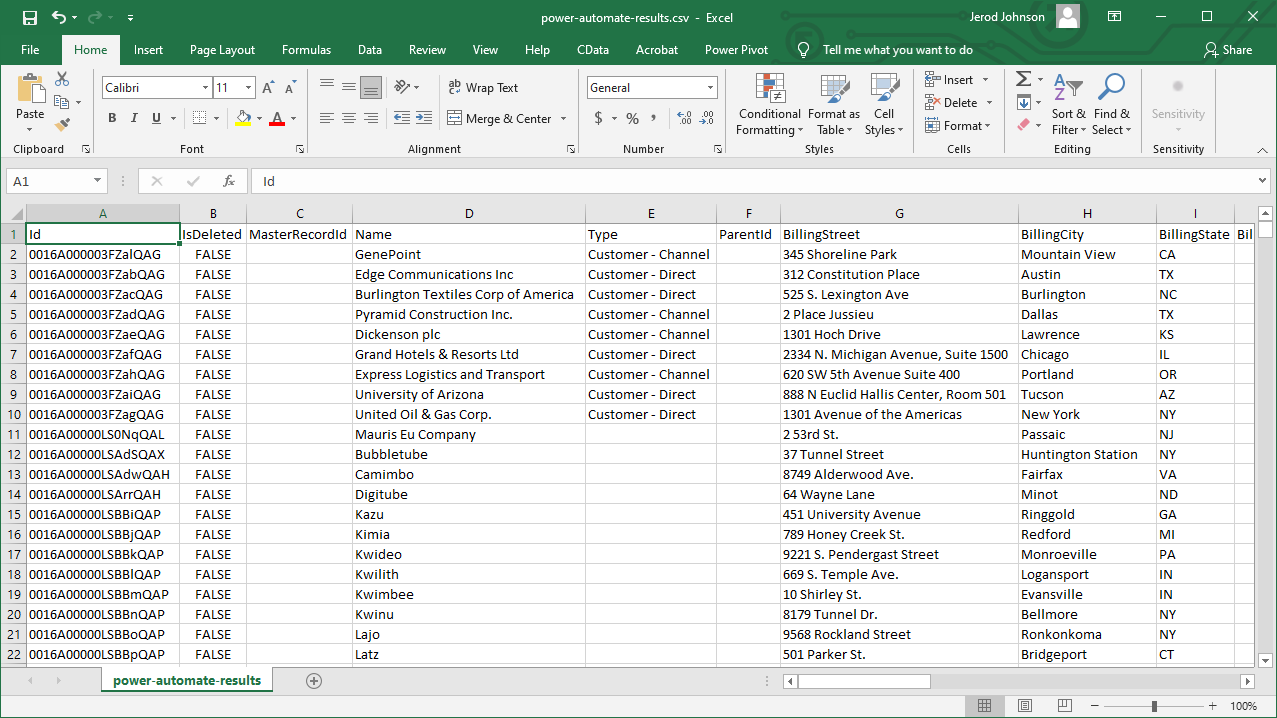Discover how a bimodal integration strategy can address the major data management challenges facing your organization today.
Get the Report →How to Access Live Google Sheets Data in Power Automate Desktop via ODBC
The CData ODBC Driver for Google Sheets enables you to integrate Google Sheets data into workflows built using Microsoft Power Automate Desktop.
The CData ODBC Driver for Google Sheets enables you to access live Google Sheets data in workflow automation tools like Power Automate. This article shows how to integrate Google Sheets data into a simple workflow, moving Google Sheets data into a CSV file.
Through optimized data processing, CData ODBC Drivers offer unmatched performance for interacting with live Google Sheets data in Microsoft Power Automate. When you issue complex SQL queries from Power Automate to Google Sheets, the driver pushes supported SQL operations, like filters and aggregations, directly to Google Sheets and utilizes the embedded SQL engine to process unsupported operations client-side (e.g. SQL functions and JOIN operations).
Connect to Google Sheets as an ODBC Data Source
If you have not already, first specify connection properties in an ODBC DSN (data source name). This is the last step of the driver installation. You can use the Microsoft ODBC Data Source Administrator to create and configure ODBC DSNs.
You can connect to a spreadsheet by providing authentication to Google and then setting the Spreadsheet connection property to the name or feed link of the spreadsheet. If you want to view a list of information about the spreadsheets in your Google Drive, execute a query to the Spreadsheets view after you authenticate.
ClientLogin (username/password authentication) has been officially deprecated since April 20, 2012 and is now no longer available. Instead, use the OAuth 2.0 authentication standard. To access Google APIs on behalf on individual users, you can use the embedded credentials or you can register your own OAuth app.
OAuth also enables you to use a service account to connect on behalf of users in a Google Apps domain. To authenticate with a service account, you will need to register an application to obtain the OAuth JWT values.
See the Getting Started chapter in the help documentation to connect to Google Sheets from different types of accounts: Google accounts, Google Apps accounts, and accounts using two-step verification.
When you configure the DSN, you may also want to set the Max Rows connection property. This will limit the number of rows returned, which is especially helpful for improving performance when designing workflows.
Integrate Google Sheets Data into Power Automate Workflows
After configuring the DSN for Google Sheets, you are ready to integrate Google Sheets data into your Power Automate workflows. Open Microsoft Power Automate, add a new flow, and name the flow.

In the flow editor, you can add the actions to connect to Google Sheets, query Google Sheets using SQL, and write the query results to a CSV document.
Add an Open SQL Connection Action
Add an "Open SQL connection" action (Actions -> Database) and configure the properties.
- Connection string: DSN=CData Google Sheets Source
After configuring the action, click Save.

Add an Execute SQL Statement Action
Add an "Execute SQL statement" action (Actions -> Database) and configure the properties.
- Get connection by: SQL connection variable
- SQL connection: %SQLConnection% (the variable from the "Open SQL connection" action above)
- SQL statement: SELECT * FROM Orders
After configuring the action, click Save.

Add a Write to CSV File Action
Add a "Write to CSV file" action (Actions -> File) and configure the properties.
- Variable to write to: %QueryResult% (the variable from the "Execute SQL statement" action above)
- File path: set to a file on disk
- Configure Advanced settings as needed.
After configuring the action, click Save.

Add a Close SQL Connection Action
Add a "Close SQL connection" action (Actions -> Database) and configure the properties.
- SQL Connection: %SQLConnection% (the variable from the "Open SQL connection" action above)
After configuring the action, click Save.

Save & Run the Flow
Once you have configured all the actions for the flow, click the disk icon to save the flow. Click the play icon to run the flow.

Now you have a workflow to move Google Sheets data into a CSV file.

With the CData ODBC Driver for Google Sheets, you get live connectivity to Google Sheets data within your Microsoft Power Automate workflows.
Related Power Automate Articles
This article walks through using the CData ODBC Driver for Google Sheets with Power Automate Desktop. Check out our other articles for more ways to work with Power Automate (Desktop & Online):






